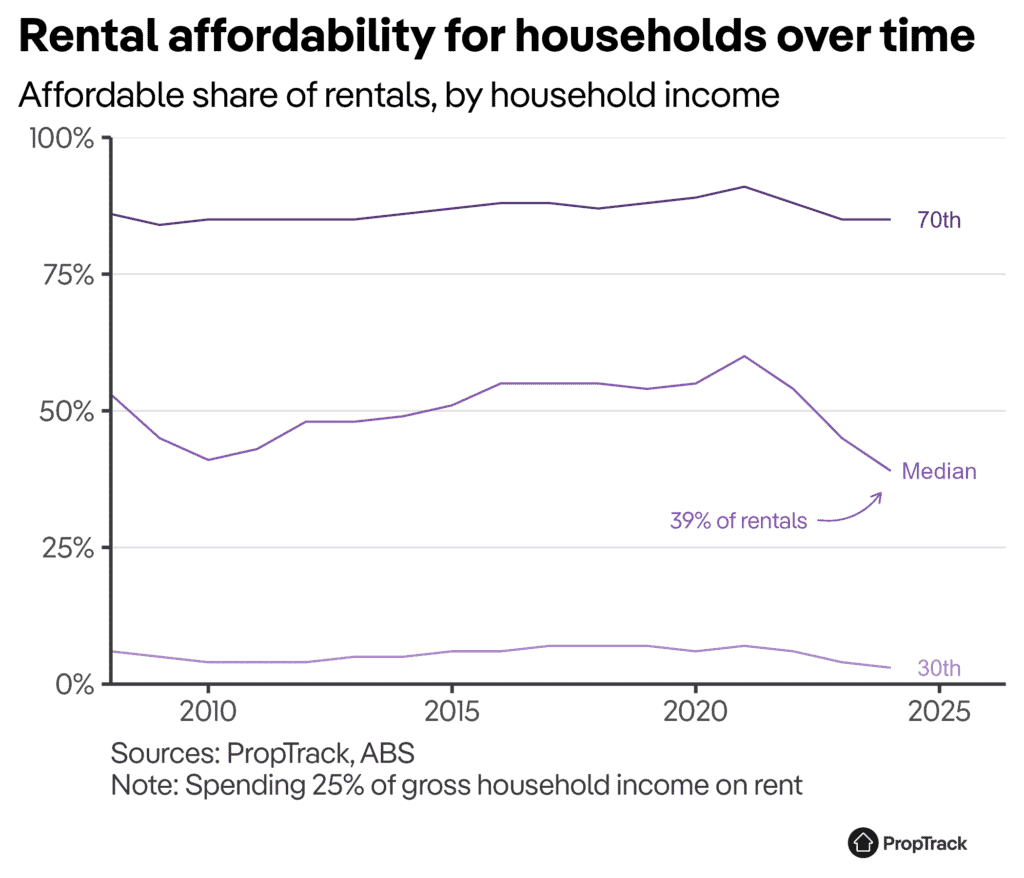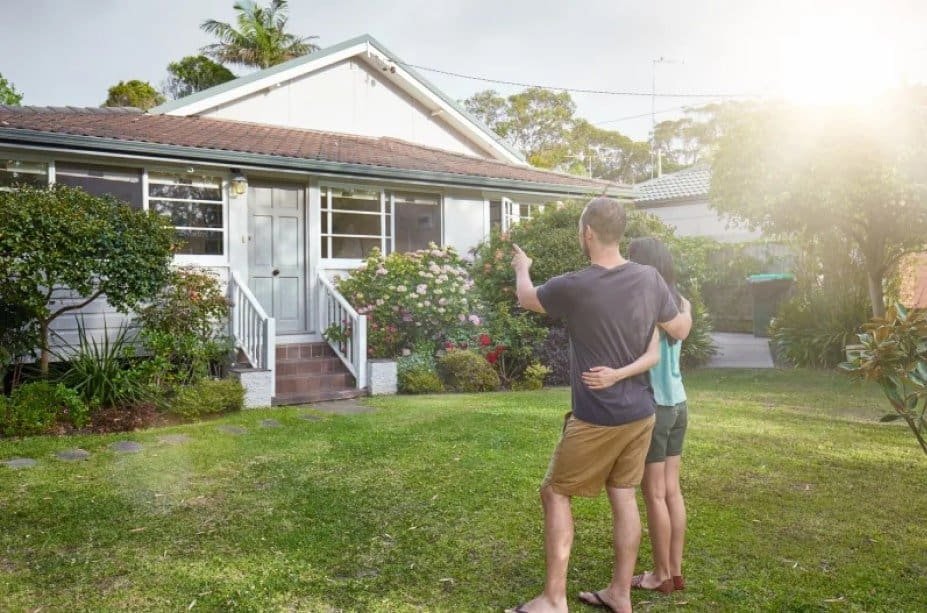Rental prices have increased significantly in recent years, creating a challenging situation for renters that hasn’t been seen in almost two decades.
PropTrack’s latest Rental Affordability report indicates that renters are currently experiencing challenging conditions, with the toughest conditions seen in at least 17 years.

Between 2009-2010, rental conditions were particularly challenging due to the Global Financial Crisis, but they have since improved as income growth has exceeded rent growth.
According to the data, property prices decreased during the pandemic when demand for inner city rentals declined as a result of border closures and remote working arrangements.

Rental affordability has worsened considerably since then.
The report revealed that a household with a median income of $110,000 per year could only afford 39% of advertised rentals over the past year, assuming they allocate 25% of their pre-tax income towards rent.
What’s driving the decline in affordability?
Surging rental costs are the main factor behind the decline in affordability.
Rents have increased at a higher rate than incomes since the beginning of the pandemic.
Nationally, rents grew by 38% from the March quarter in 2020 to the December quarter in 2023.
In Perth and Brisbane, there was significant growth, with increases of 67% and 50% respectively. Regional Perth also saw substantial growth, with rents up 68% over the same period.
Comparatively, there has been a 19% increase in median household incomes, however, the growing gap between rent and income is leading to a decrease in the number of households able to afford rental properties.
Prices for both overall and more affordable properties have been increasing, leading to a decline in rental affordability.
Rising cost-of-living pressures
Rising cost-of-living pressures have led renters to search for more affordable housing options, resulting in higher price increases for lower-end rental properties compared to higher-end properties. Since mid-2018, those in the lowest decile have experienced a 41% greater increase than those in the highest decile.
This is having an additional impact on renters who are already facing financial challenges, particularly low-income households.
The rental crisis remains a significant challenge
While increasing Commonwealth Rent Assistance can help in the short term to mitigate rent increases, enhancing rental availability is crucial for addressing the issue in the long term.
The government aims to construct 1.2 million homes in the next five years, but delays in construction are leading to a shortage. Further efforts are needed to ensure affordable housing for all households.



